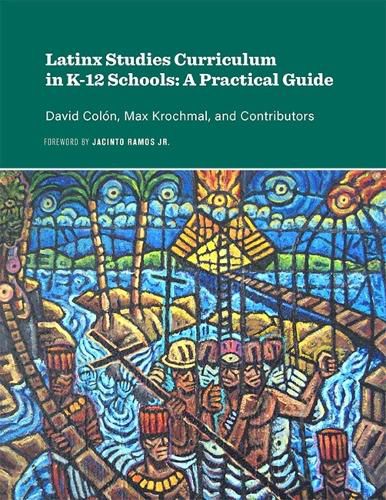Readings Newsletter
Become a Readings Member to make your shopping experience even easier.
Sign in or sign up for free!
You’re not far away from qualifying for FREE standard shipping within Australia
You’ve qualified for FREE standard shipping within Australia
The cart is loading…






Created by an interdisciplinary team of researchers in partnership with a large urban school district, this guidebook helps teachers and school leaders in Texas and beyond learn how to overlay Latina/o/x Studies content on top of existing state standards, providing a practical roadmap toward historically accurate, culturally relevant curricula and instruction that can be injected into all K-12 social studies classes. Following a detailed introductory essay synthesizing the field for new practitioners, it provides detailed explanations of seven major themes that define Latinx Studies across time and space, each accompanied by embedded enduring understandings and essential questions to jumpstart the process of backward design. For Texas teachers and school districts, the guidebook also includes content maps that provide guidance on sample lessons for specific units in each course and grade level. Finally, educators can draw upon detailed annotated bibliographies to identify supplemental resources, guidance for learning activities outside the classroom, and a scope and sequence for a high-school Latinx Studies elective. This is essential reading for teachers and district leaders who seek to provide culturally relevant instruction to improve student outcomes among the nation’s largest and fastest-growing ethnic group.
$9.00 standard shipping within Australia
FREE standard shipping within Australia for orders over $100.00
Express & International shipping calculated at checkout
Created by an interdisciplinary team of researchers in partnership with a large urban school district, this guidebook helps teachers and school leaders in Texas and beyond learn how to overlay Latina/o/x Studies content on top of existing state standards, providing a practical roadmap toward historically accurate, culturally relevant curricula and instruction that can be injected into all K-12 social studies classes. Following a detailed introductory essay synthesizing the field for new practitioners, it provides detailed explanations of seven major themes that define Latinx Studies across time and space, each accompanied by embedded enduring understandings and essential questions to jumpstart the process of backward design. For Texas teachers and school districts, the guidebook also includes content maps that provide guidance on sample lessons for specific units in each course and grade level. Finally, educators can draw upon detailed annotated bibliographies to identify supplemental resources, guidance for learning activities outside the classroom, and a scope and sequence for a high-school Latinx Studies elective. This is essential reading for teachers and district leaders who seek to provide culturally relevant instruction to improve student outcomes among the nation’s largest and fastest-growing ethnic group.